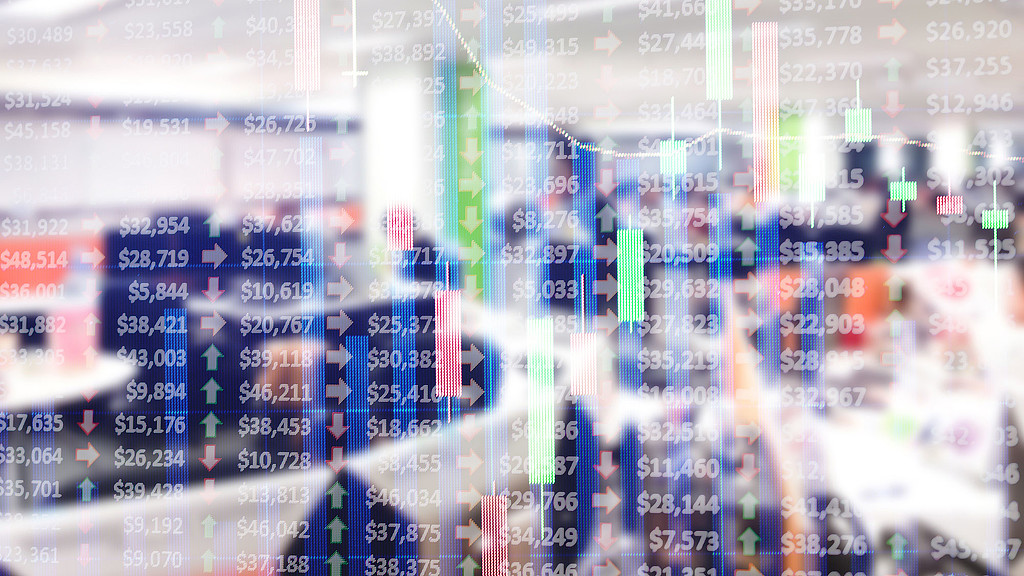How the Pandemic Has Shaped Our Understanding of the Trading Floor
August 31, 2020 | By Rocco Giannetti and Marisol DeRosa
Editor’s Note: This post is part of our ongoing exploration of how design is responding to the COVID-19 pandemic.
The trading floor is a bustling hub of high-stress, high-pressure activity, hinging on traders’ ability to instantaneously process, analyze, and react to multiple, fast-paced streams of information. But when the COVID-19 pandemic forced institutions like the New York Stock Exchange to close across the globe, everything changed. People accustomed to working on the trading floor had to quickly adapt to a new way of working: trading from home.
Seemingly overnight, traders embraced new virtual tools that allowed them to trade from their home offices. And it went off without a hitch.
“Despite the move to all-electronic trading,” wrote Reuters, “none of the exchange operators experienced any major technical glitches amid record volumes, and all of them reported first-quarter profits that beat analysts’ expectations.”
This largely successful shift astonished many global financial institutions. According to our research, financial firm real estate leaders said they were “shocked,” “surprised,” and “stunned” at how quickly trading from home (TFH) materialized and how successful it was, particularly when compared to the rigor and exacting nature of trading floor design. Those who had long met the idea of trading from home with intense skepticism, particularly with challenges around technology, communication, security, and the obvious regulatory implications, had to admit that home trading was a viable alternative to the floor.
The intricacies of trading-floor designTrading floors have long been mission critical environments, where design is integral to enhancing the connection between humans and technology.
When creating these spaces, designers are hyper-attuned to function, and the smallest details make a big difference. Trading floors are where high-stakes trades are conducted in microseconds: distance to the pantry is measured in steps, not feet; restrooms are quantified in wait time rather than fixtures; and a desk isn’t where a trader sits but is their vantage point to market activity.
During the design phase of these spaces, we always seek to answer the question: How can design enhance team communications, provide a great experience despite stressful work, and drive innovation for financial institutions?
Now that COVID-19 has challenged the norm, Gensler is examining what the pandemic may have unlocked for the design of trading floors, for traders’ behaviors, and the possibility of trading from home beyond the pandemic. In doing so, we have questioned long-held assumptions about how design ought to support the activity of trading floor.
Trading from home: Bullish or bearish?Bullish, but for how long?
In a recent conversation among real estate leaders at major American and multi-national financial institutions hosted by Gensler, the majority felt bullish about trading from home in the short term. However, most also see it as a means of business continuity until workers can be brought back to the trading floor in a way that prioritizes their health and safety (which has already begun to occur at some companies).
To help their teams transition to TFH during the pandemic, most institutions supplied a standard set of tools, ranging from virtual turrets, to two or more monitors, a monitor and camera dedicated to virtual conferencing, and platforms to enable virtual team communications. Responding creatively to necessity, teams developed ad hoc ways of recreating the adjacencies they had on the trading floor, virtually.
Due to the perceived inevitability of a regulatory shift back to pre-pandemic conditions, the overwhelming majority of leaders we surveyed felt bearish about TFH lasting long-term, with many preferring a return to the floor sooner rather than later. This supports the belief by some that trading floor culture can only exist on the trading floor.
Technology as an inflection pointSince the pandemic hit, many firms have deployed new virtual tools in record time that have been so well received that they will likely be a part of the long-term toolkit, whether working remotely, in a decentralized location, or on the main trading floor. As the financial services industry emerges from the pandemic, how will technology change on the trading floor, and what are the impacts on design?
Even though TFH may retreat as the pandemic dissipates, many business shifts made for the pandemic have shown us how and where we might challenge assumptions about design of the trading floor.
We analyzed a few key activities essential to trading floors and explored how technology may change behavior/process and potential impacts on design. Here are a few practical considerations:
1. Hold morning meetings virtually and expand inclusivity.The morning meeting — a large, communal meeting usually held in a large conference room (known as an MMR) before market opening — is a hallmark of trading floor culture. Traders meet to start their day with a rundown of market activity, briefings around opportunities that they may want sales teams to discuss with their clients. This is also a time where research teams can provide highlights of recently completed reports.
Historically, attendance has been capped by whomever could fit in the room and by seniority. What if the morning meeting could be conducted virtually and, therefore, with more inclusivity? Junior team members could actively participate while being physically at a trade desk in case they need to execute a trade during the meeting. MMRs could be converted to multipurpose rooms to host premier virtual interactive meetings, enabled with broadcast capabilities, and be flexible enough to facilitate team whiteboarding sessions.
2. Explore new ways to host client gatherings.Client meetings, such as IPOs and roadshows, have traditionally been held to provide an exceptional client experience, particularly by showcasing technologies, conveying brand values, and physically showing the magnitude of operational scale.
What if the client gathering could be held primarily online, more closely resembling a high-tech digital experience than a traditional meeting? Or, if held in person, in on-floor demo rooms with immersive, studio-quality technology to boast differentiated capabilities?
3. Facilitate behavior that supports transactions.Communication and desk layout on the trading floor are inextricably linked. With new technologies such as augmented reality (AR), privacy concerns about webcams have been mitigated, keeping face-to-face communication strong and supporting transaction behavior.
According to Gensler’s 2020 Work From Home Survey, workers expect their companies to make changes to the workplace as a result of COVID-19, and people want to return to a different workplace: one with more space and more support for mobile and virtual work.
What if future layouts become so flexible that desks could be moved around and configured for team member adjacencies, or, to give new hires opportunities to shadow teams? Firms are doubling down on their investments toward telephony and cloud-based technology that would untether the desk and enable traders to rotate or choose different desks pending the immediate needs.
One desk, one trader?At the intersection of behavior and space are policies and protocols. Incorporating TFH as a portion — however large or small — of an overall real estate portfolio strategy could unlock value, innovation, and experience. It could also challenge the existing assumption that floor plates to hold trading activity need to be akin to football fields.
What if TFH was issued as a perk to create a more flexible employee experience? Attracting top talent continues to be competitive and any additional perks are highly sought after, especially with the abundance of offerings at tech firms.
Reflecting on the changes that the global pandemic has brought may bring more questions than answers but, as designers and strategists, we envision an opportunity to unlock innovations in design. For traders, we see an enormous opportunity to improve the trading experience — through innovation, technology, and flexibility. For financial institutions, the rigor of real estate requirements may create value, allowing real estate services to be even more responsive to a firm’s internal clients. We see the current moment as a paradigm shift to reimagine the future of the trading floor, where technology and the human experience intersect.
For media inquiries, email .


